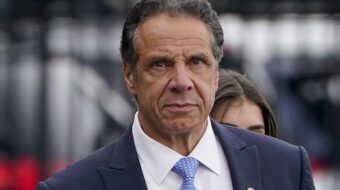On a recent visit back to New Orleans I looked out onto Lake Pontchartrain. A dry breeze lifted the water into waves that shimmered in the sun: beautiful, despite the filthy floodwater the lake had devoured.
Everything about the city is sad, including the beautiful parts that remain, because they make the loss of the rest of it so obvious.
Most tragic is the revelation that racism dictated the failed response to the disaster, and accounts for continued ambivalence to the fate of New Orleans and its evacuees.
Recent information published by the Brookings Institution and the Congressional Research Service reveals significant data on the population impacted by Hurricane Katrina. Seventy-five percent of the displaced persons from New Orleans, or 270,000 people, are African American. Many have righteously spoken out against the stereotypical portrayal by the media. Television images focused on criminal behavior, and presented a group of people living in dire poverty, unemployed, uneducated and living in substandard housing.
Displaced Black residents are disproportionately underemployed and undereducated, compared to their white counterparts. However, most African Americans lived on modest incomes and owned their homes.
As everyone knows, the Lower Ninth Ward neighborhood was destroyed and hundreds of people died there. But underneath the destruction are nice homes, playgrounds, churches and schools. Sixty percent of the residents owned their homes; some purchased recently, others handed down for generations. Roberta Gratz of the Michigan Land Use Institute describes it as “a mix of finely-carpentered shotgun cottages and bungalows, with brick homes and an occasional larger Victorian. … The Lower Ninth Ward incorporated all of the components of a lively, sustainable, engaging Smart Growth Neighborhood.”
Public housing developments in New Orleans housed 50,000 individuals before the storm. The Neighborhood Story Project documented the stories of young people growing up in these communities in a series of books that came out after the storm. They discuss family problems and crime, and also courageous individuals who tried to build community and positively influence lives.
One person interviewed about Lafitte Housing Development said, “The people know how to make it through the worst and still love where they come from. It’s the place where I went through a lot of different struggles in both my family and the larger community, but it’s also the place where I learned about caring.”
Some of the most treasured artistic and musical traditions of the city originate in these neighborhoods. This side of public housing is not seen by the public, only images of gangs and drug dealers.
Both whites and Blacks from New Orleans are perceived as drunken and irresponsible partiers. The combination of Mediterranean and African-Creole joie de vivre is interpreted as sinful decadence. It is convenient to conclude that everyone was fiddling as the city washed away. But the reality is, people in New Orleans of every race and ethnicity, like the rest of the country, try to provide a life for their families, take care of aging parents, go to school and make good decisions about whom they elect.
Sixty percent of the original population of the city still lives elsewhere. One in three displaced persons remains unemployed. The majority of the evacuees were not able to vote in the mayoral election. There is slim chance that they will ever be able to return to New Orleans.
Once again, it all boils down to privilege: only those with money and power will be able to return. If this is allowed to happen, New Orleans will become a Disneyland and cease to be a real city. Any real city needs all its citizens to survive: all classes, educational levels and ethnicities in communities with their own histories and traditions.
It is in everyone’s best interest to struggle against the systemic effects of racism and economic disparity. The dialogue must cross all lines of race and class and boundaries of north and south, urban and rural. The diversity that made New Orleans unique could provide the strength for its rebuilding and serve as a model of cooperation and equality for the rest of the country.
Sharon LaCour is a native New Orleanian now living in Minnesota.








